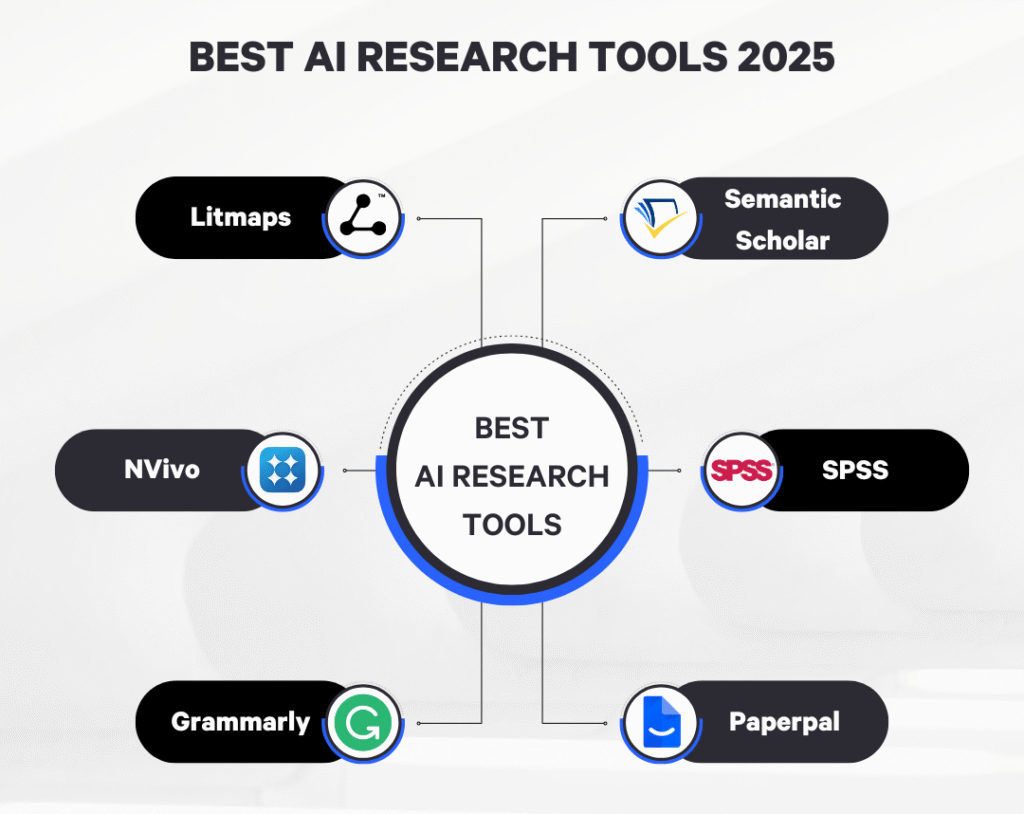
1. Litmaps
Purpose: Visualizes connections between academic papers and research topics.
How to use:
- Create an account on Litmaps.
- Enter your research topic or key papers.
- The tool generates a visual map of related studies and citations.
- Use it to find new papers, track emerging trends, and identify influential research.
2. Semantic Scholar
Purpose: AI-powered academic search engine.
How to use:
- Go to Semantic Scholar.
- Search for keywords, topics, or authors.
- Filter results by year, citations, or journals.
- Use it to find high-quality sources, explore references, and extract key insights.
3. NVivo
Purpose: Qualitative data analysis software.
How to use:
- Import interview transcripts, survey responses, or other qualitative data.
- Code data by themes, patterns, or categories.
- Use visualization tools to see relationships between codes and data.
- Ideal for thematic analysis, case studies, or mixed-method research.
4. SPSS
Purpose: Statistical analysis for quantitative data.
How to use:
- Input your survey or experimental data.
- Perform descriptive statistics, regression, correlation, or ANOVA.
- Generate charts and tables to interpret results.
- Perfect for testing hypotheses and analyzing large datasets.
5. Grammarly
Purpose: Writing assistant and grammar checker.
How to use:
- Copy-paste your research papers, reports, or blog posts.
- Grammarly highlights grammar, punctuation, and clarity issues.
- Use suggestions to improve readability and academic tone.
6. Paperpal
Purpose: AI writing assistant for researchers.
How to use:
- Install Paperpal plugin or use their web platform.
- Paste your draft or manuscript.
- The tool suggests improved phrasing, sentence structure, and consistency.
- Helps polish academic writing for journal submission or reports.
AI tools can assist us, but they are not fully autonomous. Additionally, we can use Zotero and Mendeley to organize and manage existing literature and research articles. It is important to learn how to use these tools effectively. We can find tutorials and lessons on these tools through YouTube.



AI research tools are reshaping the landscape of modern research. By combining speed, accuracy, and insight generation, they allow researchers to focus more on critical thinking and innovation, while routine tasks become automated.
Wrapping Up with Key Insights
AI research tools are transforming the way knowledge is discovered, analyzed, and applied. They streamline literature reviews, automate data collection, and enhance analysis with predictive power. Writing and visualization become more efficient, allowing researchers to focus on critical thinking and innovation. While these tools offer speed and accuracy, responsible and ethical use is essential to maintain research integrity. Overall, AI is not just a support tool—it is becoming a strategic partner in advancing research and generating meaningful insights. But do not copy all.

Leave a Reply